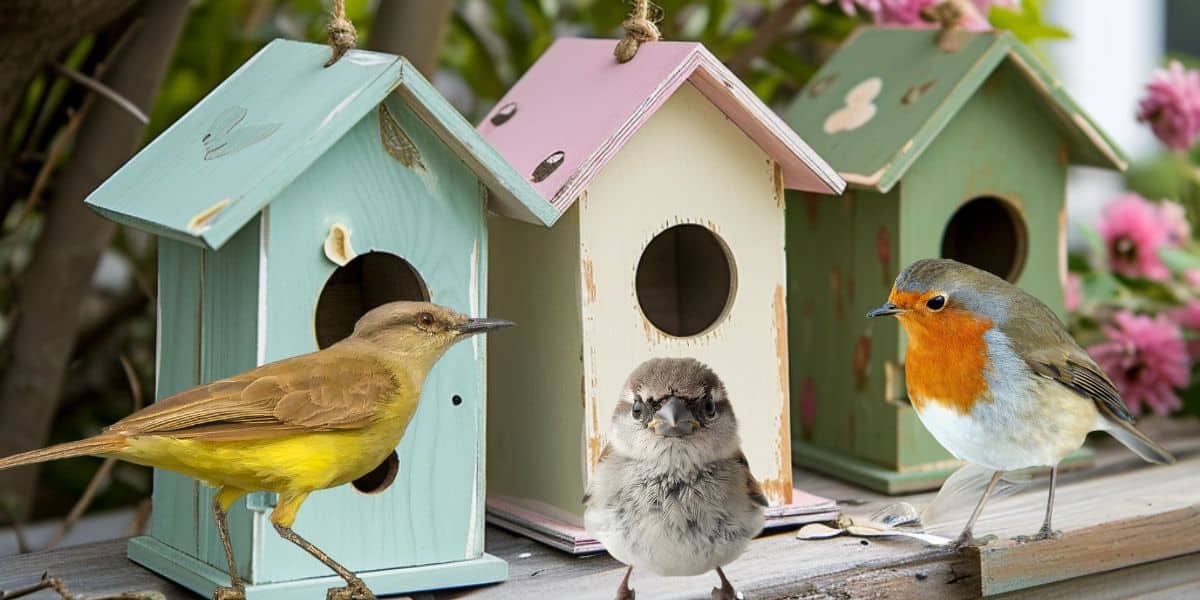Creating a haven for backyard birds is not only a joy for birdwatchers but also a vital contribution to local wildlife conservation. Nesting boxes play a crucial role in this, providing safe places for birds to raise their young. The placement of these nesting boxes can significantly impact their occupancy and success rates. Here’s how to strategically place nesting boxes to make your garden a bird-friendly paradise.
Understanding Bird Preferences

Before placing any nesting box, it’s essential to understand the preferences of different bird species. Some birds, like bluebirds, prefer open spaces, while others, such as chickadees, seek the shelter of dense foliage. Researching the habits of your local bird population is key. For instance, bluebird boxes should be placed in open areas with a clear line of sight, as these birds are territorial and like to survey their surroundings.
Height Matters
The height at which you place a nesting box can determine its attractiveness to certain birds. Generally, boxes should be mounted at a height that mimics the natural nesting sites of the intended species. For example, many small songbirds prefer heights between 5 to 10 feet off the ground. However, some species like woodpeckers may prefer higher placements. It’s important to ensure that the box is out of reach from common predators such as cats and raccoons.
Direction Is Key
The direction your nesting box faces can affect its temperature and vulnerability to weather conditions. A north or east-facing box will avoid the strongest sun and prevent overheating during hot summer months—a consideration that could be crucial for species like the heat-sensitive tree swallows. Additionally, positioning away from prevailing winds will protect inhabitants from harsh weather and driving rain.
Consider Safety and Accessibility
Safety should be a top priority when placing nesting boxes. They should be located where predators cannot easily access them. Adding predator guards can deter animals like snakes and squirrels from reaching the nests. Accessibility is also important for maintenance; you’ll need to clean out the boxes after each breeding season to prepare them for future occupants. Therefore, ensure they are placed where you can safely reach them with minimal disturbance to the birds.
Proximity to Food Sources
Birds are more likely to take up residence in a nesting box if there is an abundance of food nearby. Placing boxes near natural food sources, such as berry bushes or native flowering plants that attract insects, can increase their appeal. Remember that different species have different dietary needs; insectivores might require different planting choices compared to birds that feed on seeds or fruits.
Avoiding Competition and Overcrowding
To prevent competition for nesting sites, space out your birdhouses appropriately based on the territorial range of the species you aim to attract. Overcrowding can lead to aggressive encounters between birds and reduce the likelihood of occupation. As a rule of thumb, small songbirds require about 100 yards between boxes, while larger birds might need more space.
Maintaining Your Nesting Boxes
Maintenance is critical for the longevity of your nesting boxes and the health of their avian inhabitants. Inspect them regularly for signs of wear or damage and repair them as necessary. Cleaning out old nests can prevent parasites and diseases, ensuring that your feathered friends have a clean environment for their next brood. Be mindful of timing; cleaning should occur when it’s least likely to disturb breeding cycles or overwintering birds.
Incorporating these strategies into your garden design will not only provide safe havens for local bird populations but also enhance your wildlife watching experience. By understanding and catering to the needs of backyard birds through thoughtful placement and maintenance of nesting boxes, you contribute significantly to wildlife conservation right in your own backyard.












